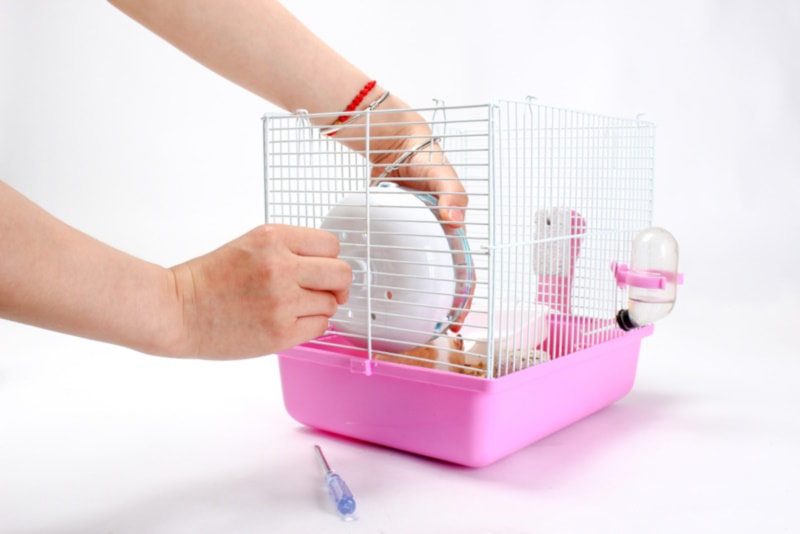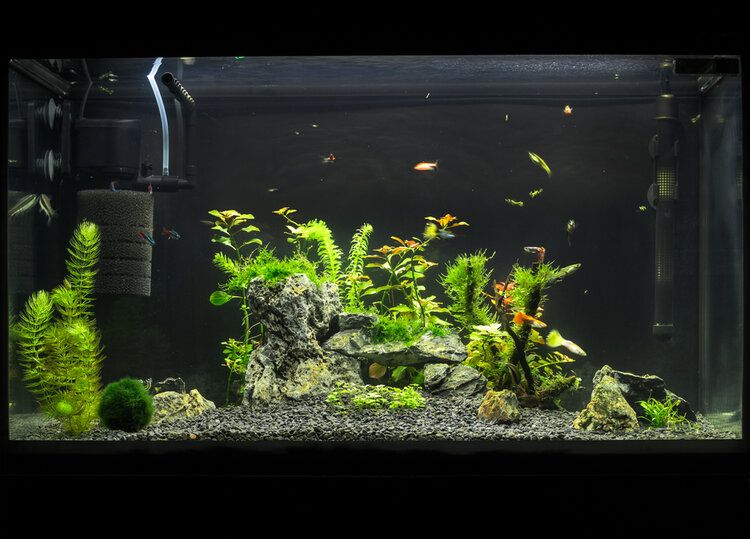VET APPROVED

The information is current and up-to-date in accordance with the latest veterinarian research.
Learn more »Click to Skip Ahead
As a pet owner, you are responsible for caring for your hamster’s needs to ensure a good quality of life. This includes feeding your pet a healthy diet, entertaining them with plenty of enrichment, and providing them with a safe and comfortable enclosure.
When it comes to your hamster’s enclosure, keeping it tidy should be high on your priorities. To keep your pet’s area clean, you must stick to a regular maintenance schedule. Some areas need daily care, while others can be kept clean with less frequent attention. In this article, we will discuss how to clean your hamster’s cage properly and how often you should attend to it.

How Often Does Your Hamster’s Cage Need to Be Cleaned?
The various items in your hamster’s cage have different cleaning requirements. They will need to be cleaned daily, weekly, or monthly, depending on what they are. The frequency of cleaning also depends on the size of the cage and whether your hamster toilets in the same place, like a litter tray or a certain area in their cage.
Daily Cleaning
Items that should be cleaned daily include your pet’s food and water dishes. These objects can grow dirty more quickly than other objects in the enclosure, so frequent maintenance is necessary. It is also a good idea to spot-clean your hamster’s cage every day. This means removing soiled or wet bedding and old food and replacing it with some clean bedding.
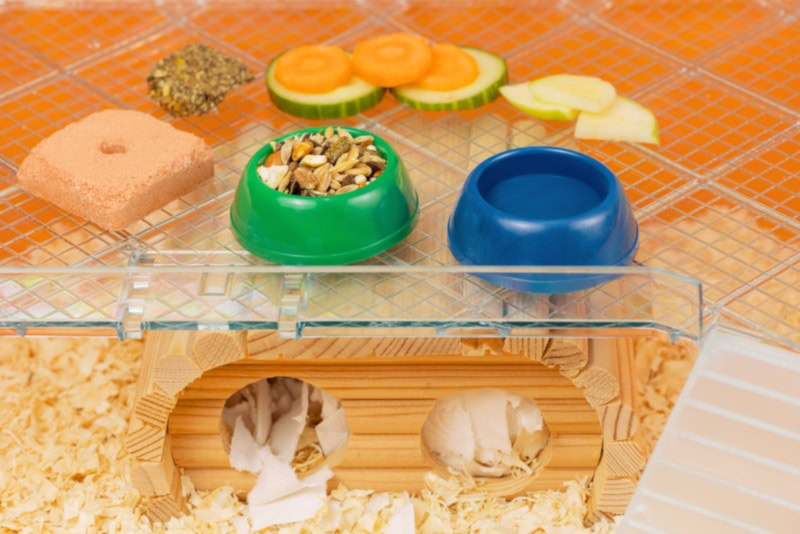
Weekly Cleaning
Every 1 to 2 weeks, you should change out your hamster’s bedding. As hamsters have poor eyesight and rely on their sense of smell, it is important to reserve a few handfuls of the old, unsoiled bedding, which you will then add back into the cage alongside the new bedding. If you cannot spot-clean your hamster’s cage every day, doing so several times per week is another option to prevent the cage from getting too dirty.
Monthly Cleaning
Grime can collect all over your hamster’s enclosure. Your pet’s toys, platforms, tunnels, and even the wires on their cage can become dirty. Therefore, you must do a full cage cleaning at least once per month.
This involves removing all the habitat features and soaking them in warm, soapy water. While they soak, wipe out the empty cage with a pet-safe cleaner and allow it to dry. After the soaking items have had time to sit, scrub and rinse them. Before returning them to the cage, ensure they are completely dried. If they are returned damp, mold can grow in your pet’s enclosure.

How to Clean Your Hamster’s Cage
Cleaning your hamster’s cage takes time but isn’t terribly complicated. Different items in your pet’s enclosure have different cleaning requirements, so we’ll discuss how to clean your pet’s feeding dishes, bedding, and tunnels.
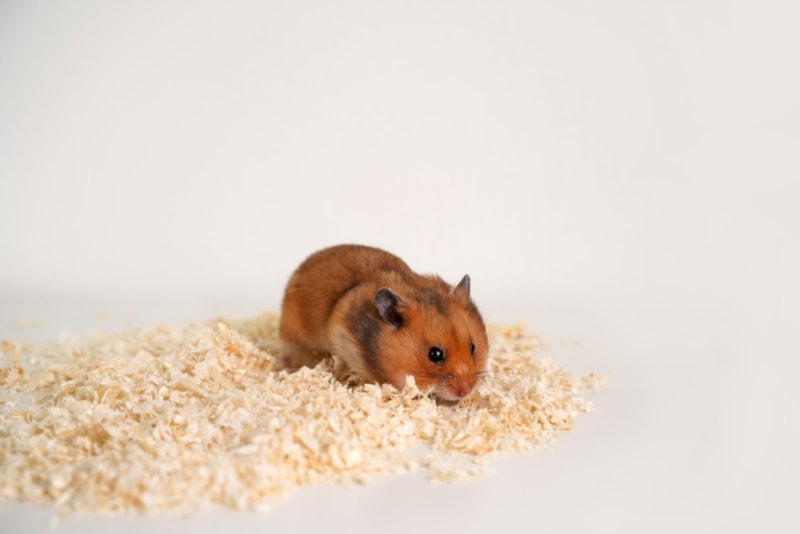
Cleaning Food and Water Dishes
As mentioned, your pet’s food and water dishes should be cleaned daily. Your hamster will put their mouth on the dishes regularly, increasing the production and spread of grime and bacteria. You can easily wash the items with some soap, warm water, and a bottle brush.
Changing Bedding
Regardless of the type of bedding you put in your hamster’s habitat, it should be changed every week or every other week. This is because it will become soiled with food, water, and waste throughout the week. If there is visibly soiled bedding, you should remove it as soon as you see it (spot cleaning), even if you haven’t reached your 1-week mark.
Cleaning Hamster Tunnels
The inside of hamster tunnels may be difficult to reach and clean. To make the process easier, consider purchasing a bottle brush to scrub the inside of the tunnels when washing them.

Caring for Your Hamster’s Hygiene
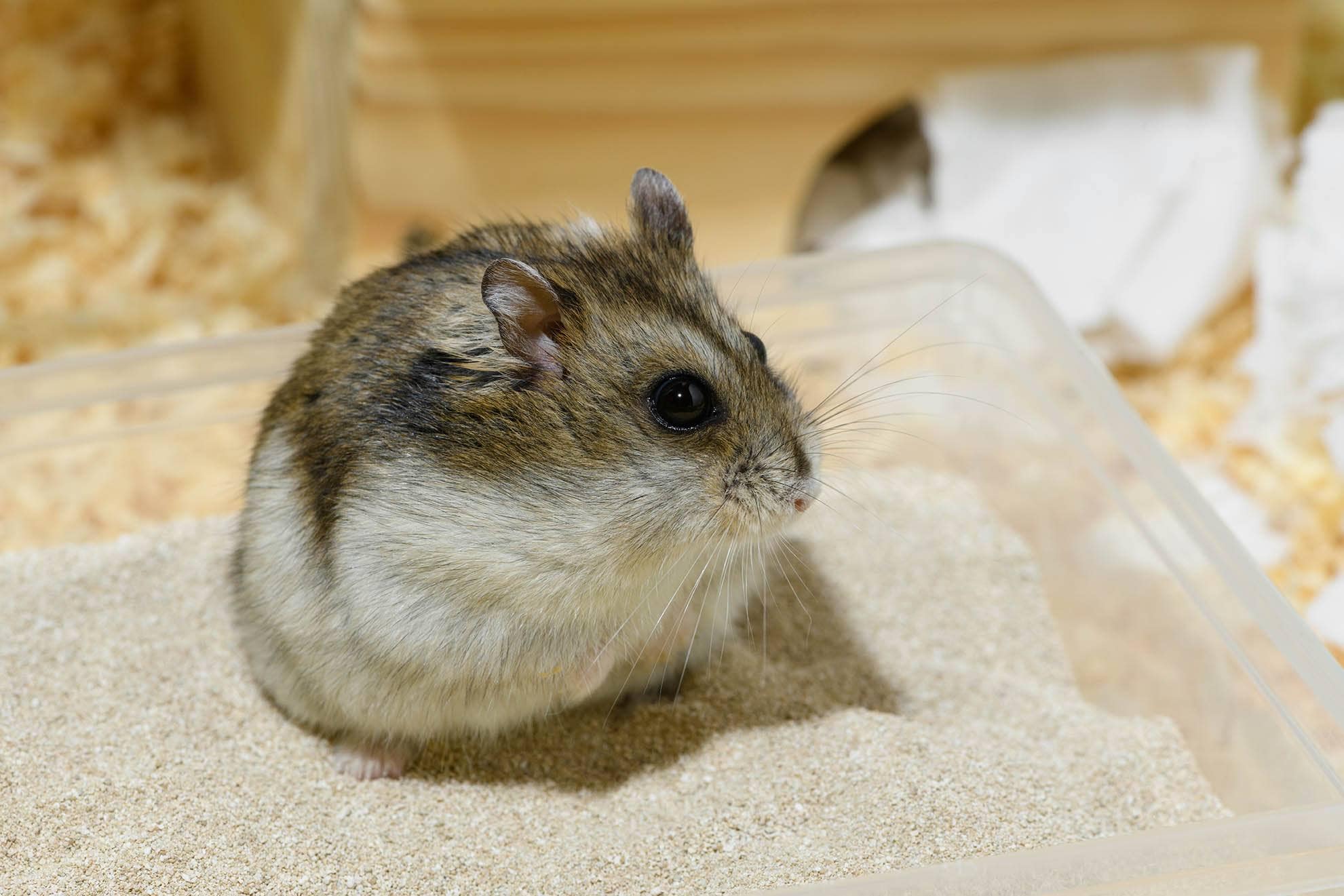
As long as you keep your hamster’s cage clean, keeping your pet clean shouldn’t be too difficult. Hamsters are typically skilled self-grooming animals, so they will keep themselves tidy. For the most part, your only role in maintaining your pet’s hygiene is keeping the enclosure clean.
However, there are instances where your hamster may need a little help keeping their fur clean. Bathing your hamster isn’t advised since they are especially prone to getting cold when wet. Plus, water strips their fur of its healthy oils.
Instead, you can help your pet clean up with a sand bath. The sand bath allows your hamster to play and clean themself without the presence of water, and it does just as fine a job as a water bath would. Make sure you use play sand or reptile sand with no added dyes or calcium. In addition to a sand bath, you can brush your pet’s fur to remove any debris trapped between their hair as long as they are comfortable being handled.

FAQ About Hamster Enclosures
A hamster’s enclosure plays a significant role in their care. Ensuring that you provide an adequate enclosure for your pet can increase the quality of their life. Since a good cage is so vital to their well-being, we’ve answered some frequently asked questions that you may have about hamster enclosures.
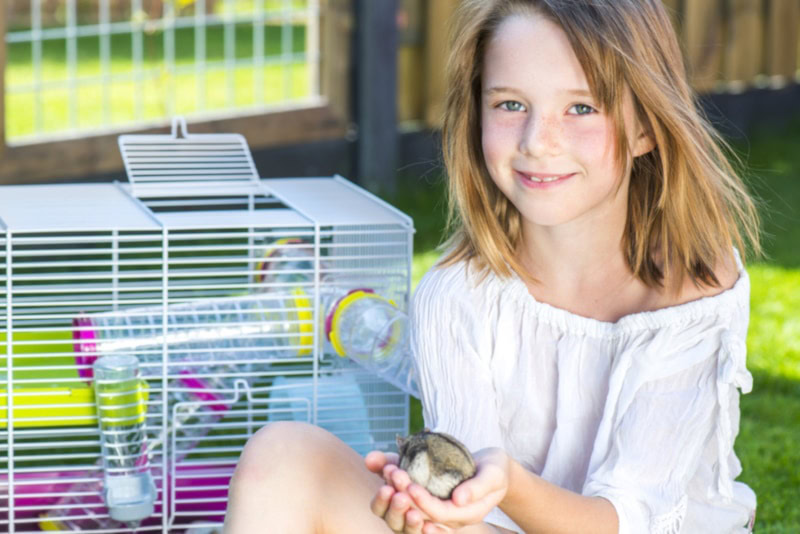
How Big Should a Hamster’s Enclosure Be?
This varies somewhat by species. For Syrian hamsters, the minimum amount of solid floor space needed per hamster is 900 square inches or 40 x 22.5 inches with a height of 24 inches. Wire flooring can be hard on your hamster’s feet and cause them pain or discomfort.
Chinese and dwarf hamsters need a minimum of 700 square inches of solid floor space which equates to 40 x 15.5 inches per hamster with a cage height of at least 24 inches. They will need 6 to 8 inches of bedding ideally.
Your pet’s enclosure should be well-ventilated, allowing fresh air inside of the cage. This prevents the accumulation of odors.
What Is the Best Bedding Material for Hamsters?
Various grass hays are the preferred form of bedding material for your hamster. However, unscented toilet paper or paper towels are adequate on a short-term basis. Cedar and pine shavings can irritate your hamster’s mucous membranes, and commercial nesting material (also known as fluff) can lead to serious health issues, such as intestinal blockages. If using aspen flakes or hemp shavings, add a layer of hay in too to help the tunnels they make stay up and hold their shape.
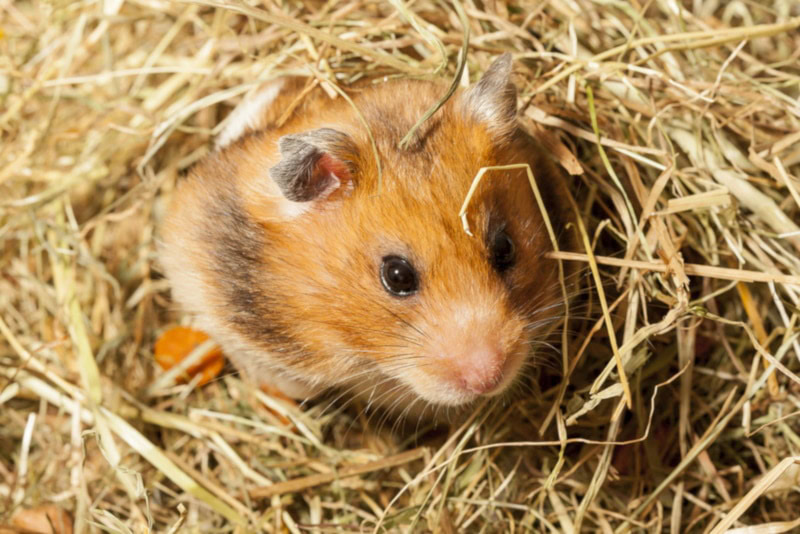
How to Provide Entertainment in Your Hamster’s Cage?
Hamsters need to be entertained to ensure a good quality of life. Providing enrichment opportunities in your pet’s enclosure is a great way to ensure that they remain physically and mentally active. Toys are a great addition to your hamster’s habitat, and they allow them to chew, climb, explore, burrow, hide, and more. Hideaways, platforms, and exercise wheels are other excellent choices. Sprinkling food on the bottom of the enclosure will make it more challenging to eat than placing it all in a food bowl. Deep bedding allows hamsters to build tunnels and imitate their behavior in the wild.

Final Thoughts
Some items in your hamster’s enclosure require daily cleaning, whereas other parts can be well-maintained with weekly or monthly cleaning. Spot-cleaning your hamster’s cage is also important, so if anything is soiled, clean it immediately. Keeping your pet’s enclosure tidy will help maintain good hygiene and increase their quality of life. Once you develop a sufficient cleaning routine, stick to it, and your hamster will thank you.
- https://www.rspca.org.uk/documents/1494939/0/How+to+take+care+of+your+hamster+%28PDF+1.21MB%29.pdf/1fe52927-6265-18e4-1135-6a1a875f7a6a?t=1571906231447
- https://forevervets.com/blog/keeping-your-hamster-and-its-cage-clean
- https://www.msdvetmanual.com/all-other-pets/hamsters/providing-a-home-for-a-hamster
- https://www.bluecross.org.uk/advice/hamster/wellbeing-and-care/hamster-care
- https://www.petmd.com/exotic/care/hamster-cages
Featured Image Credit: HelloRF Zcool, Shutterstock
